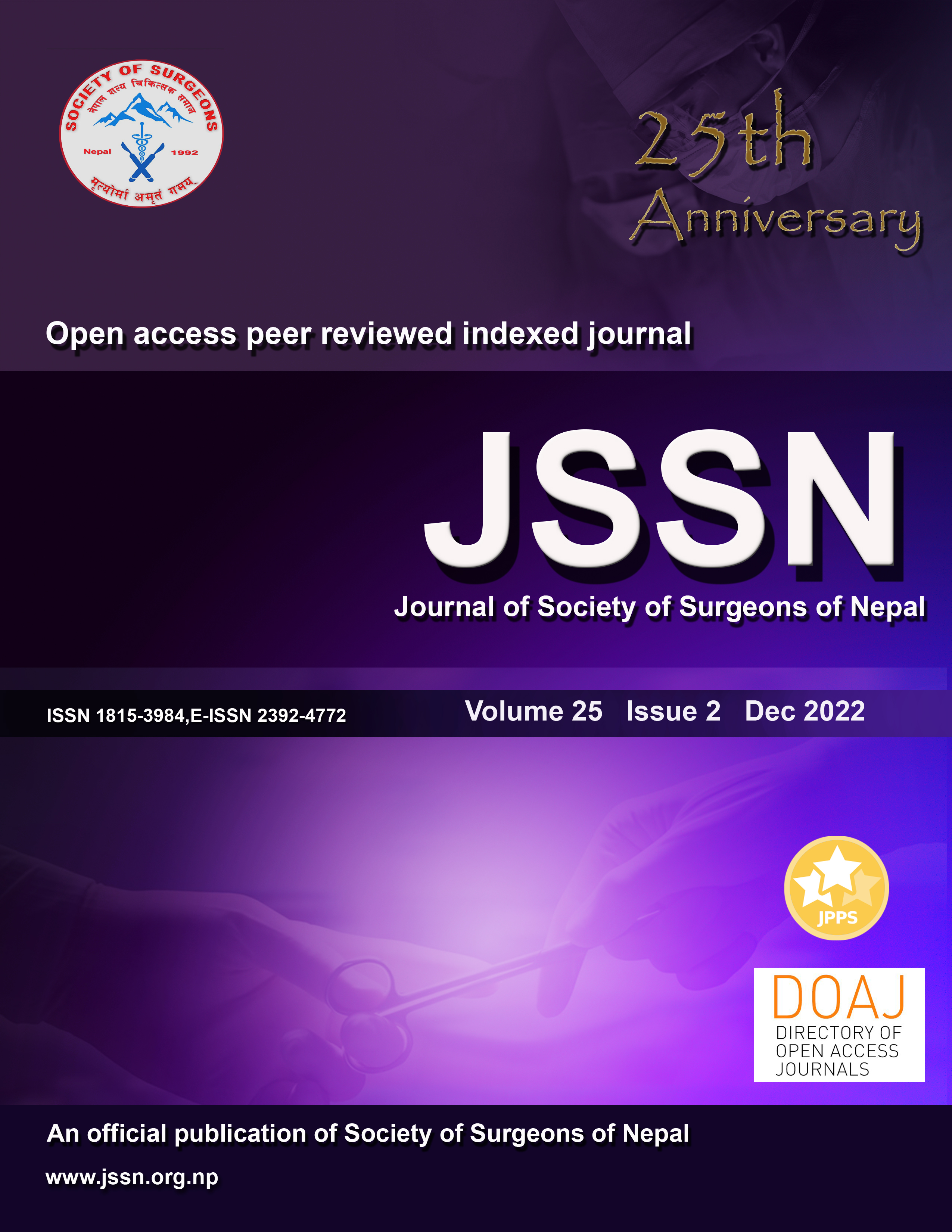Patient Safety and organizational Safety Culture in Surgery: A Need of an Hour in the developing countries
DOI:
https://doi.org/10.3126/jssn.v25i2.50821Keywords:
Patient safety, Quality, Health Professions, surgeryAbstract
Every year, more than 200 million surgeries are performed around the world, and recent statistics show that adverse event rates for surgical pathologies remain unacceptably high, despite several national and global patient safety initiatives over the last decade. Patient safety is diverse and highly complicated in nature, with several critical components. Although concern for patient safety is fundamental in health care practice, its transition into knowledge is comparatively recent, and hence patient safety may be deemed a "new" field. Current surgical safety guidelines and checklists are generic and not adapted to specific patient concerns and risk factors in surgical subspecialties. All surgical practitioners and health care organizations must therefore become better aware of the fundamental context of patient safety, actively participate in endeavors to integrate patient safety measures in daily practice, and foster a patient safety culture. The purpose of this review article is to outline patient safety in surgical techniques that should be adopted and implemented.
Downloads
Downloads
Published
How to Cite
Issue
Section
License
Copyright (c) 2022 Sunil Basukala, Sujan Bohara, Anup Thapa, Aashish Shah, Souyma Pahari, Yugant Khand, Ojas Thapa, Ayush Tamang, Bivek Bhagat, Bikash Bahadur Rayamajhi

This work is licensed under a Creative Commons Attribution 4.0 International License.




